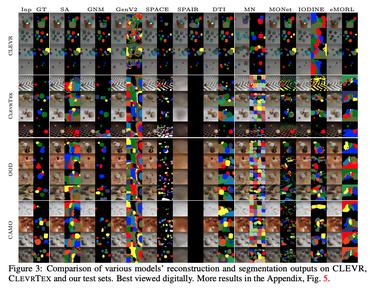Segmenting Moving Objects via an Object-Centric Layered Representation
The objective of this paper is a model that is able to discover, track and segment multiple moving objects in a video. We make four contributions: First, we introduce an object-centric segmentation model with a depth-ordered layer representation. This is implemented using a variant of the transformer architecture that ingests optical flow, where each query vector specifies an object and its layer for the entire video. The model can effectively discover multiple moving objects and handle mutual occlusions; Second, we introduce a scalable pipeline for generating multi-object synthetic training data via layer compositions, that is used to train the proposed model, significantly reducing the requirements for labour-intensive annotations, and supporting Sim2Real generalisation; Third, we conduct thorough ablation studies, showing that the model is able to learn object permanence and temporal shape consistency, and is able to predict amodal segmentation masks; Fourth, we evaluate our model, trained only on synthetic data, on standard video segmentation benchmarks, DAVIS, MoCA, SegTrack, FBMS-59, and achieve state-of-the-art performance among existing methods that do not rely on any manual annotations. With test-time adaptation, we observe further performance boosts.
PDF Abstract






 DAVIS
DAVIS
 DAVIS 2017
DAVIS 2017
 DAVIS 2016
DAVIS 2016
 FBMS
FBMS
 SegTrack-v2
SegTrack-v2
 FBMS-59
FBMS-59
 PASS
PASS
